Macro Mushroom / Autumn / Edible
Prepare to be amazed by the culinary marvels of the Macro Mushroom (Agaricus urinascens) as we embark on a journey to savor its delectable delights.
Join us in celebrating the unique flavors and captivating presence of this remarkable fungus. With its impressive size and characteristic white to brown caps, the Macro Mushroom stands as a true culinary gem.
Learn to identify its distinctive features, discover its preferred habitats, and delve into the culinary wonders it offers. From its firm and fleshy texture to its savory and nutty flavor, this mushroom has the power to elevate your culinary creations to extraordinary heights.
Whether you are an experienced forager or an enthusiastic home cook, let the Macro Mushroom inspire your culinary adventures and delight your taste buds with its marvelous flavors. Embrace the abundance of nature’s bounty as we celebrate the enchanting delights that lie within the Macro Mushroom. Get ready to embark on a flavor-filled journey as we explore the captivating culinary possibilities offered by this extraordinary fungus.
Scientific Name
Agaricus urinascens
Common Names
Macro Mushroom
Family
Agaricaceae
Habitat
In fields, meadows and parks. They are saprotrophic, feeding on the dead roots systems of grasses and moss. They can appear individually or in small groups.
Description
A rare find in the UK, they have undergone some names changes over the years so you may see it listed as Agaricus macrosporus or Agaricus crocodilinus. To make things even more confusing there is also a woodland variant Agaricus urinascens var, excellens but this is very, very rare.
Identifying Features for the Macro Mushroom:
Cap:
When young the cap is smooth, as it grows they flatten out, darken slightly and develop rough scales, often splitting at their edges.
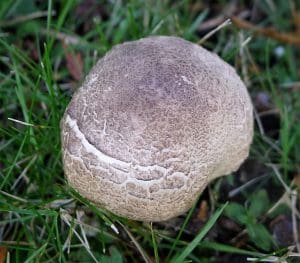
Stem:
The stems are white and have a delicate skirt. The stem is smooth above the skirt and scaly below. Quite stout. Around 7-12 cm long and when cut it will stain slightly reddish-brown.
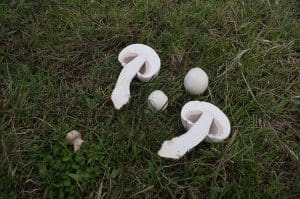
Gills:
The gills are crowded and free, pink initially they darken to a rich brown colour when mature.
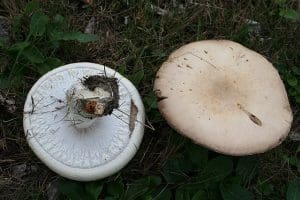

Smell:
When young they have a pleasant almond scent but as they mature they smell increasingly of urine.
Spores:
Brown.
Uses for the Macro Mushroom
In food
A really tasty mushroom, they can be used in lots of ways and can be used in the same way as Portobello mushrooms
Harvesting
The younger caps are best as they can get a bit maggoty as they get older depending on how squeamish you are.
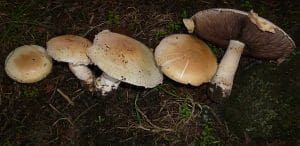
Known hazards
None Known.
Potential lookalikes
The young specimens have been mistaken for Amanita species in the past, so inexperienced foragers should only collect more mature examples who’s gills have darkened, as the gills of Amanitas stay white.
It could be confused with other Agarics the main one to be wary of is The Yellow Stainer (Agaricus xanthodermus) it can looks similar but stains bright yellow when damaged and smells of iodine.
Extra Notes
The name urinascens comes from Latin and means ‘gradually acquiring a smell like urine’, the common English name Macro refers to their huge size.



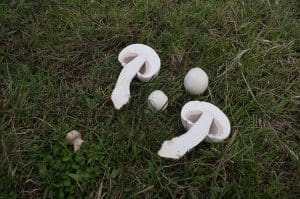
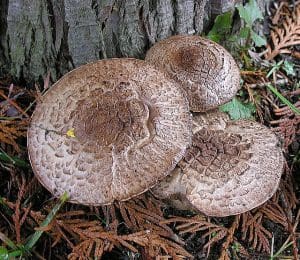



Leave a Reply
You must be logged in to post a comment.